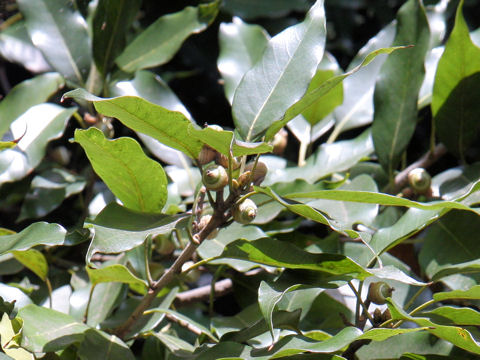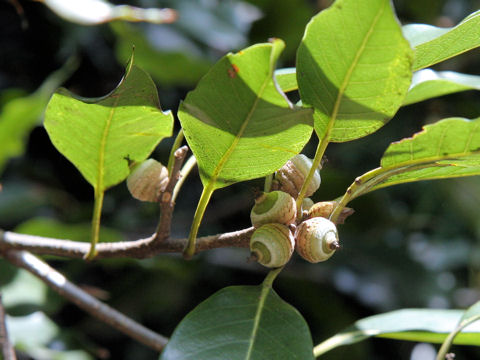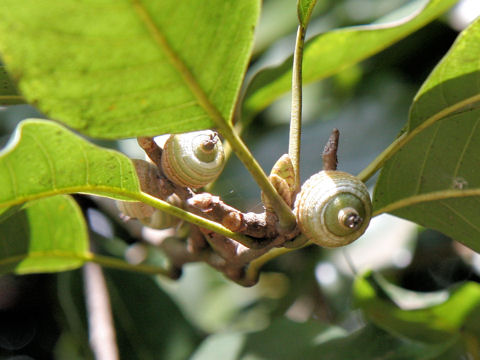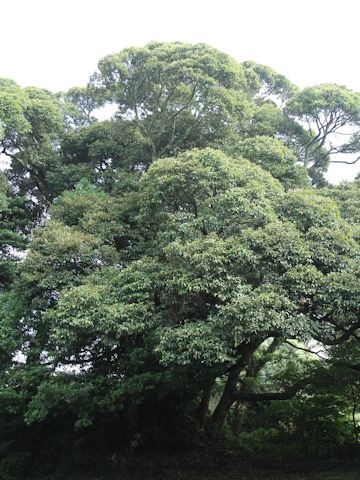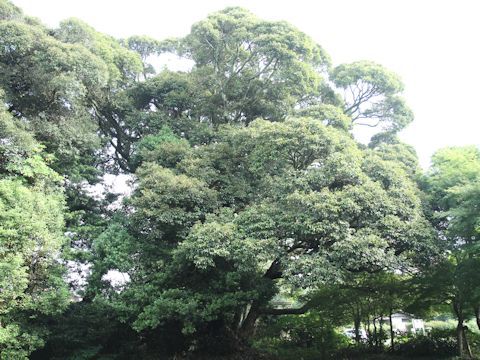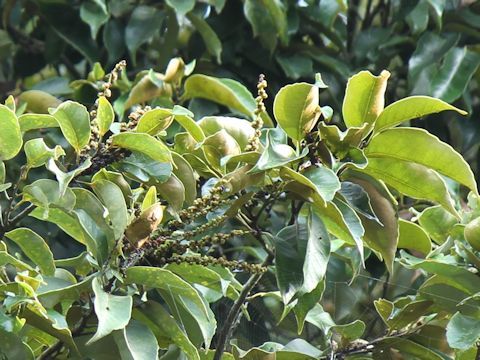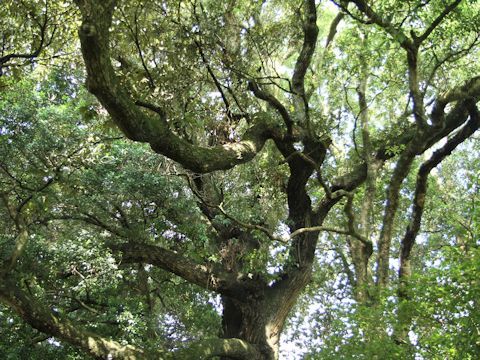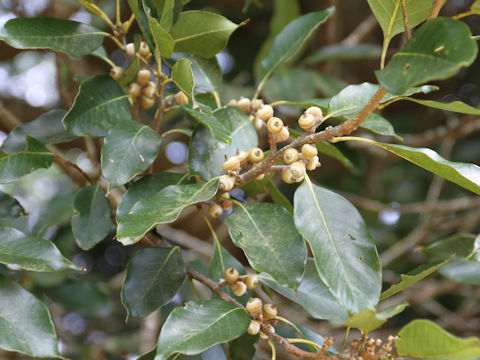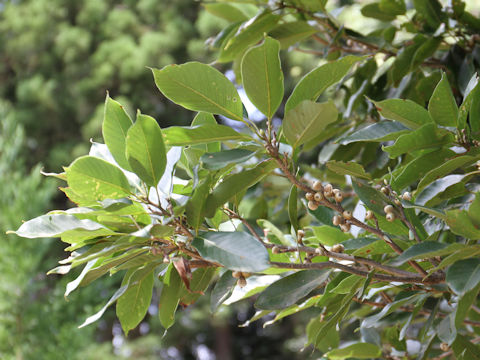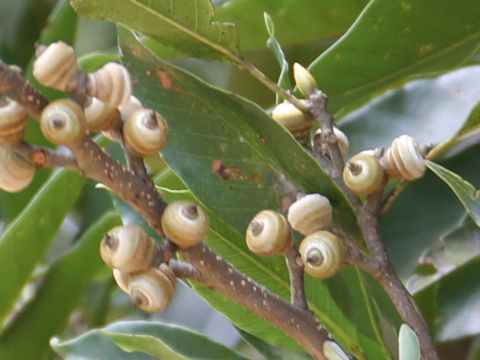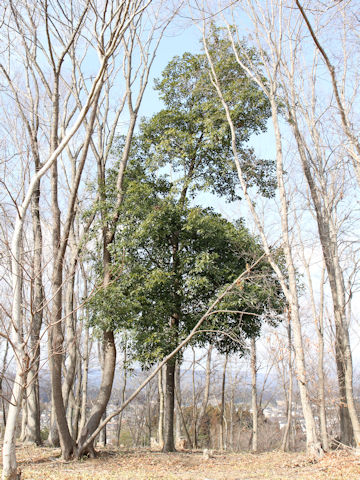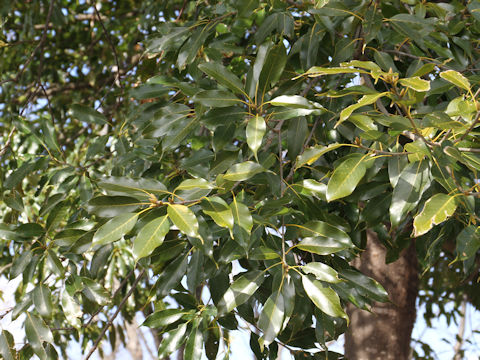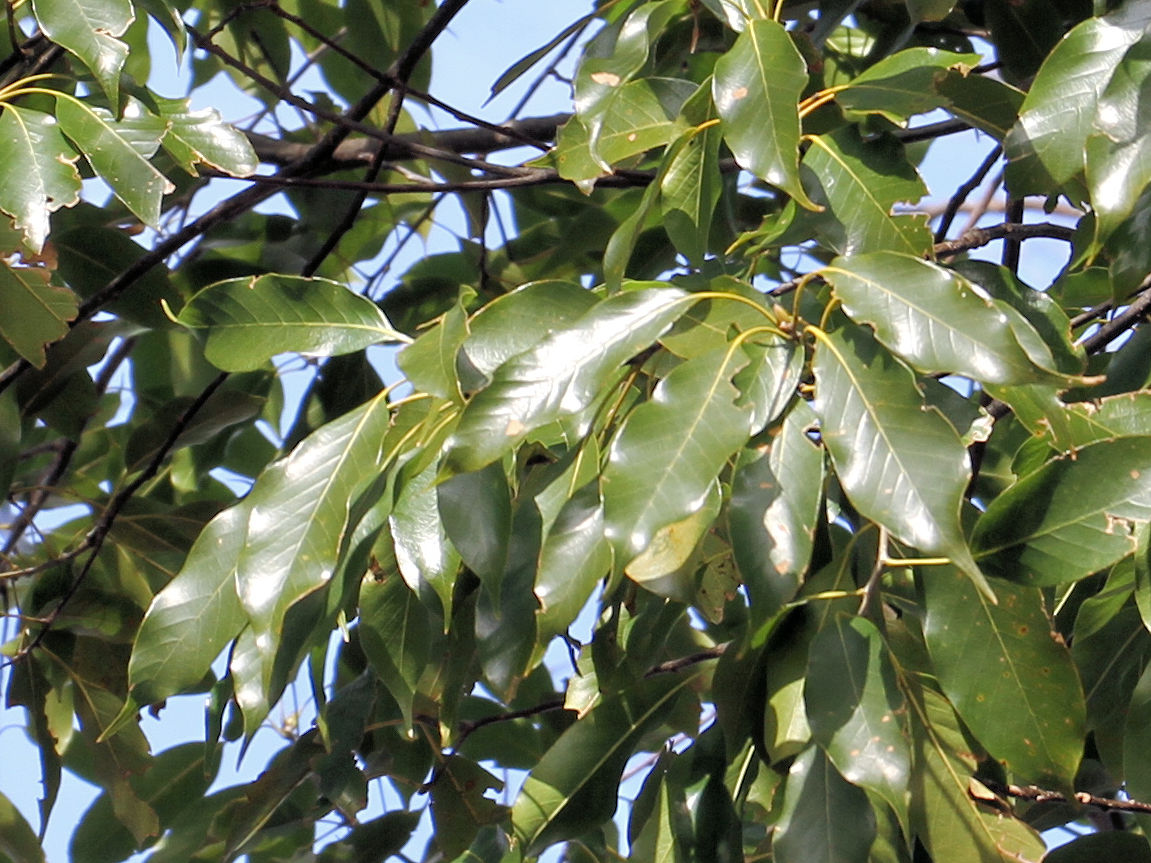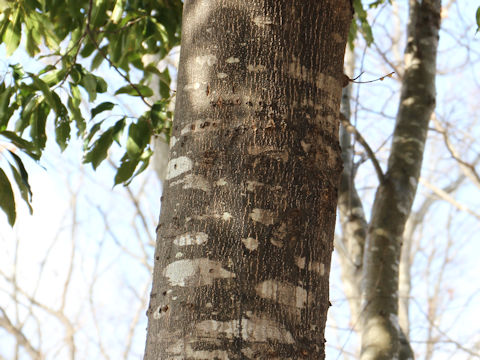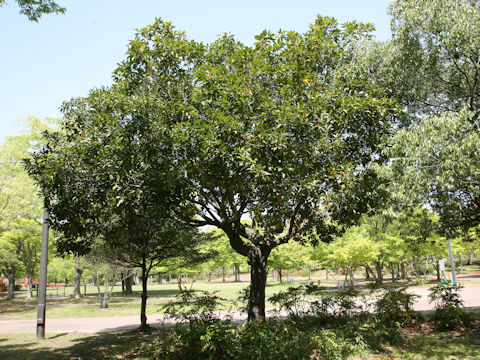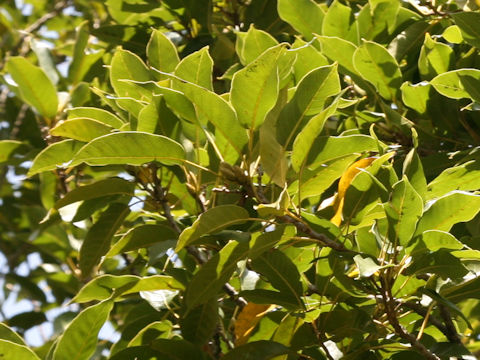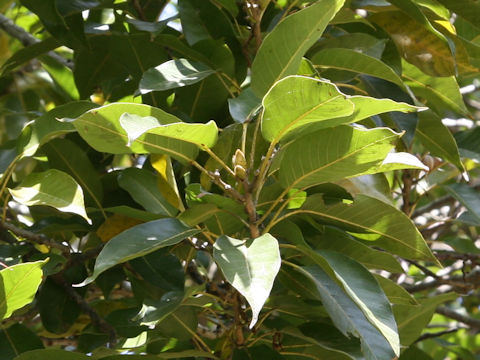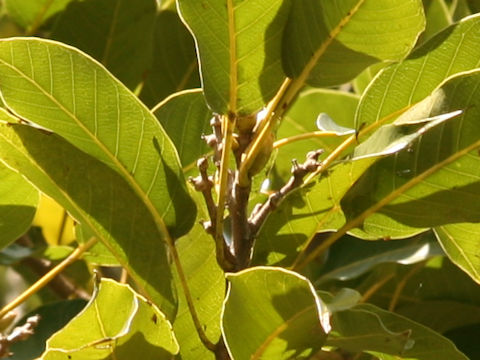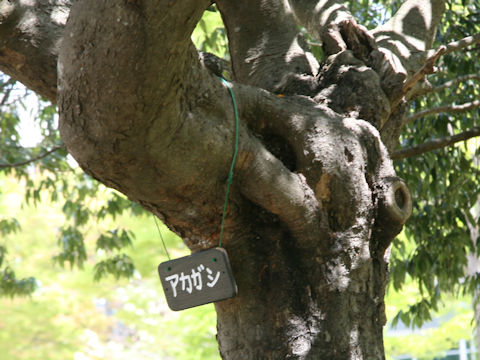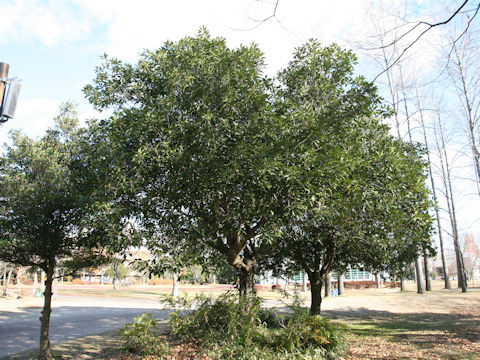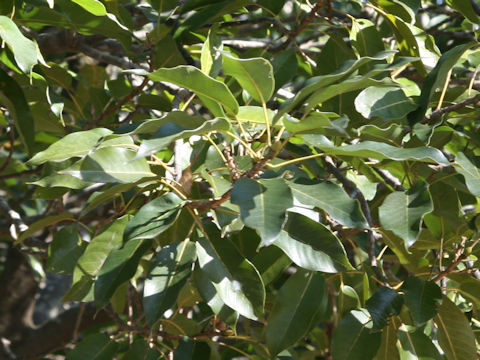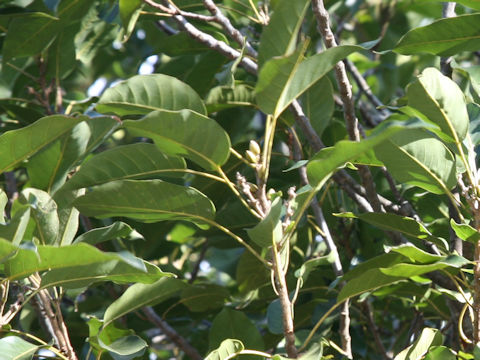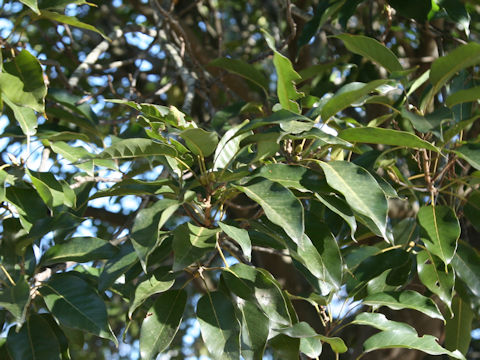|
|
|
|
[Index]
[Back] |
|
-- もっと見る(Show more)--
|
|
|
|
わが国の本州、宮城・新潟県以西から四国・九州、それに台湾や朝鮮半島南部、中国に分布しています。山地に生え、高さは20メートルほどになります。樹皮は緑灰黒色で、老木なると割れ目が目立ちます。葉は長楕円形で、ふつう全縁、互生します。雌雄同株です。5月から6月ごろ、前年枝の下部から長い雄花序を下垂させ、葉腋に雌花序を直立させます。果実は卵球形の堅果で、2年目の秋に熟します。材は淡い紅褐色で非常に堅く、農具や器具材、建築材などに利用されます。別名で、「おおがし(大樫)」、「おおばがし(大葉樫)」とも呼ばれます。台湾華語では「短尾葉石櫟」、中国語では「嶺南柯(duan wei ke)」と呼ばれます。 |
|
|
ブナ科コナラ属の常緑高木で、学名は Quercus acuta (syn. Pasania harlandii)。英名は Japanese red oak。 |
|
|
The Japanese red oak (Quercus acuta) belongs to Fagaceae (the Beech family). It is a tall evergreen tree that is distributed westward from Miyagi-Niigata prefecture of Honshu to Shikoku, Kyushu of Japan, Taiwan, the southern Korean Peninsula and China. This tree grows in mountains and can reach about 20 m in height. The barks are greenish gray-black, and fissured when aged. The leaves are oblong, usually entire and arranged into alternate. It is monoecious. The male clusters are drooping on the lower new branches, and the female clusters are erect and borne in the axils from May to June. The fruits are ovate-round nuts and mature in next year's fall. The timber is pale rose-brown, very hard, and used for agricultural implements, equipments or architectures. It is called "短尾葉石櫟" in Taiwanese Chinese and "嶺南柯" (duan wei ke) in Chinese. |
|
|
[上・中1~2] 東京都文京区「小石川植物園」にて、2009年08月09日撮影。 [中3~中6] 千葉県東庄町「東庄県民の森」にて、2013年06月23日撮影。 [中7~中9] 千葉県香取市大角にて、2015年08月19日撮影。 [中10~中13] 福島県南相馬市鹿島区「桜平山公園」にて、2020年01月24日撮影。 [中14~中18] 宮城県仙台市泉区「七北田公園」にて、2023年04月28日撮影。 [中19~21・下] 同上にて、2024年12月10日撮影。 |
|
|
|
Shu Suehiro |
